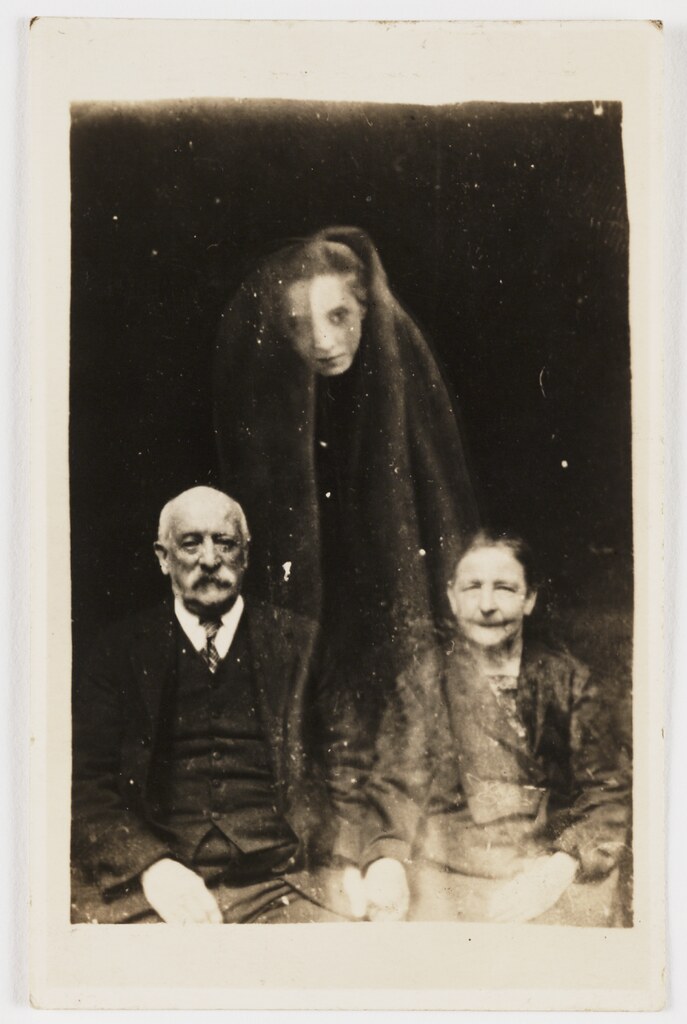CNN's Hala Gorani, in for Christiane Amanpour, speaks with former U.S. drone sensor operator Brandon Bryant.
Imagine this: killing more than 1,500 enemies in war without ever stepping foot on the battlefield. That was Brandon Bryant's life. He was a drone sensor operator responsible for tracking and killing militants halfway around the world from where the trigger was pulled, a ground control station in the U.S. states of Nevada and New Mexico.
Transcript:
Imagine this: killing more than 1,500 enemies in war without ever stepping foot on the battlefield. That was Brandon Bryant's life. He was a drone sensor operator responsible for tracking and killing militants halfway around the world from where the trigger was pulled, a ground control station in the U.S. states of Nevada and New Mexico.
Grainy black-and-white videos like this one give us a bird's eye view of this new form of warfare. This attack, for instance, took place on the border of Afghanistan and Pakistan back in 2008.
Bryant spent years helping to unleash such drones on militants and admits that he fears that one of his attacks may have, in fact, killed a child. Eventually he became so disillusioned with the career that he turned down a hefty bonus to continue.
He was later diagnosed with post-traumatic stress disorder, PTSD. Now Bryant is opening up about it all, giving the world a window into the windowless bunker where he spent the past several years and revealing new details about America's top secret and controversial drone program.
Brandon Bryant joins me now from New York.
Thanks for being with us.
BRANDON BRYANT, FORMER U.S. DRONE SENSOR OPERATOR: Thank you for having me.
GORANI: So first of all I think many people wonder this. What is it like being in a bunker with basically a screen in front of you and a few buttons to push and killing someone half a world away?
BRYANT: It's -- I mean, different. You're still in the war zone and regardless of whether you -- you're physically there or not, you're actually participating in the fight. But I kind of want to expand. You said over 1,500 people; I didn't personally kill those people. Those were all the people that were a part of the operations that I participated in. And I think that's a misconception that everyone thinks, is like I'm personally taking -- staking claim in those kills.
But that's like 5.5 years of operations. So.
GORANI: But you can put a number, do you think, to the actual list of targets that you killed, that you took out? Or not?
BRYANT: Not really. It's -- the whole thing is kind of a convoluted list, I guess. I never really paid attention to numbers. I didn't care about numbers. People use those to get promotions and to make themselves feel better. And when I was given that, that kind of diploma thing, it really shocked me and --
GORANI: You were given a diploma?
BRYANT: It was like -- I guess it's like a scorecard or whatever you want to call it. I don't know. It was just one of those things that I thought was the stupid -- why did they give it to me, because all it did was make me feel terrible about like -- it make me question myself. It made me question my integrity and like was I really a part of -- part of these and as far as the people that I trust that are in that area, the number is really likely to have happened over the 5.5 year period. So.
GORANI: What did it feel like the first time you knew that one of your actions in New Mexico or Nevada, in that bunker, resulted in the death of a human being?
How did that feel?
BRYANT: We were -- we were consistently told when I was going through training that our job was to kill people and break things. And that's like one of those mantras that people say to get themselves to be ready to do stuff like that and I don't think that I could have ever been ready. I wasn't prepared and it's largely my fault. But it's also the fault of the people that initiated the training.
It was more -- the training was more imaginary than real. And I hear that they're changing that, which is -- which is good. But it still doesn't take into account like what -- I mean, how do you really convey that to people? You're not sitting there; you're not pulling the trigger of a rifle.
BRYANT: You're sitting there in a bunker or (inaudible).
GORANI: I get that. But what was it like for you on a personal level, because at one point, according to other interviews I've seen with you, Brandon, you thought that you essentially one of the attacks killed a child. This is something that you thought you saw on the video monitor.
BRYANT: Right. And it's like a -- really opened my eyes to how -- what the war was about, that it's not clean. Like we were told that this was a clean -- everything was precise and you can -- we're not a scalpel. We're still a missile and there's still mistakes that happen and there's a lot less mistakes than an F-16. But it still made me feel like -- I just ended a human life, you know. How is anyone supposed to deal with that?
And we were told to shut up and color. And we couldn't talk to a psychologist and we couldn't do this. And if we talked to anyone, we'd lose our clearance. And so some -- if affected a lot of people and it, like it would have been a lot better for us if we would have been able to sit down and talk with someone to realize our -- what had happened.
GORANI: So why are you speaking up now?
BRYANT: Because I feel like the -- all the drone operators, they get a bad rap and they need someone to talk how it's not a video game, how it is real life and these people need just as much help. Like there's a huge mental health issue here that no one wants to seem to address.
And it needs to be addressed and these people need help and guidance, and they need to be shown that they're actual, legitimate people. So they're not just an unmanned drone, flying in the sky above them. There's actual people operating behind it. And they're human beings, like they're affected by this just as much as people on the ground.
GORANI: You know, one of the things I spoke to a former CIA counterterrorism official, who essentially was saying Americans want a sterile, they want an antiseptic war. They don't want to -- they don't blood. They don't want their soldiers killed.
And in the end, this is a video. I mean this is black-and-white, grainy video.
How do you explain that it still affected you, you know, as much as somebody who's out in the battlefield actually, you know, in a ground combat situation?
BRYANT: So I don't know if you've ever heard of the knife to artillery kind of thought process. But there's a level of intimacy that goes with every action in war and while we're not as close as someone who's knifing someone on the ground or shooting their rifle or the weapon at someone, we still have this level of intimacy where we see what we do and we see the actions that happen. We see the immediate effect. And the effect isn't physical at all. It's completely psychological. You hear the hum of a computer. You don't feel the missile coming off the rail. You watch it. And there -- that disconnect right there, I think, affects a lot of people because there's no physiological effect on people.
GORANI: And what was the worst -- I mean, what, when you look -- when you look back at your years, doing this, operating drones from afar, what was some of the most shocking video you saw that really to this day stays with you?
BRYANT: The most shocking I think was when we were following someone and the guy stopped and pulled out two kids and executed them in the middle of the street. And he knew that he wasn't -- there -- he had no consequences. And the crew that got him later, it was like, vengeance almost. And these were really -- these are bad people. Like you have to understand that there are bad people over there. And we do our best to get them. And but you -- like you said earlier, America wants an antiseptic war. We want a clean war. And the reality is is that nothing is clean, like it can't ever be clean. Like there's a reason why war is hell and it's dirty and gross and no one wants to participate in it, because if it was clean then everyone would want to be a part of it.
GORANI: And you mentioned that that time you thought you killed a child, but your superiors say that they believe that it was not a child, that it was a dog possibly.
But you described in other interviews sort of seeing blood gushing out, seeing somebody who's lost a limb, et cetera. Tell us about those images as well, because this is something you're experiencing not just as a viewer, but as a participant in the incident itself.
BRYANT: That was my first Hellfire shot. And it was in January, so it was cold and like when we -- when we fired the Hellfire shot, and the two guys died and then the guy, his right leg was severed, like we -- I watched this -- bleed out from his femoral artery and in -- I mean, pixelization, and it was -- it was shocking like -- it's pixelized and it doesn't really look real. But it was real. And I think that was the most heartbreaking part for me.
GORANI: So do you still suffer from post-traumatic stress? And what would you tell Americans who support? Because as you know, about two- thirds of Americans support the drone program and targeting non-U.S. citizens abroad.
What would you say to them?
BRYANT: I still feel moral injury. I mean, there's a lot of people that make me feel guilty for feeling bad and especially guys on the ground and I'm never going to compare myself to the guys on the ground and they're mostly fantastic people and what they do is -- they're much more braver than I am and they're badasses. I'm not a badass. But what I would say is if you -- like drone operations and if you are one of those people that are for it, then you need to hold your leadership accountable for their actions and you need to make sure that these actions are held in war zones and designated war zones in that there's more transparency because you can't give someone that amount of power and expect them to use it wisely without being put in check in some sort of shape or form.
GORANI: All right. Brandon Bryant, a former drone operator with a rare, really a rare point of view there as far as this drone program is concerned, thanks so much for joining us from New York.
Earlier this year, then U.S. Secretary of Defense Leon Panetta authorized the ill-fated Distinguished Warfare Medal meant to honor exceptional achievements in cyber or drone warfare. But combat veterans pushed back against the award, which would have ranked above traditional battlefield medals, including the Purple Heart, given for combat injuries.
In April, newly appointed U.S. Defense Secretary Chuck Hagel scrapped the medal, replacing it with a, quote, "distinguishing device to be affixed to existing awards."
After a break, imagine living in darkness half the year. That was the gloomy reality for one town in Norway until someone turned on the lights. We'll explain when we come back. Stay with us.
GORANI: A final thought tonight, earlier we spoke of immigrants risking their lives to find a new home.
Now imagine a world where your home, once shrouded in darkness, is lit by an artificial sun.
The view from the mountains of southern Norway is spectacular, towering over 6,000 feet, a must-seek for hikers and skiers. But for half the year, more than 3,000 residents down below in the town of Rukon (ph) are starved for sunlight, forced to take a cable car up the slopes just to catch some rays and vitamin D. That is until now.
These three giant mirrors have been installed on the mountainside. They're equipped with sensors that follow the sun, redirecting a beam of light down to the town square, creating an artificial glow to warm the long winter season.
The idea for the mirrors is 100 years old. But the technology that guides their movement didn't exist until now. A similar project that brought light to a village in northern Italy inspired the effort. In Norwegian folklore, the mountains are home to trolls who dwell in darkness and prey on people. But sunlight turns the trolls to stone.
And in one Norwegian town, it also turns hopeful faces right to the sky, where winter has finally some of its gloom.
That's it for our program tonight. And remember, you can always contact us at amanpour.com and follow me on Twitter, @HalaGorani. Thanks for watching and goodbye from CNN Center.









